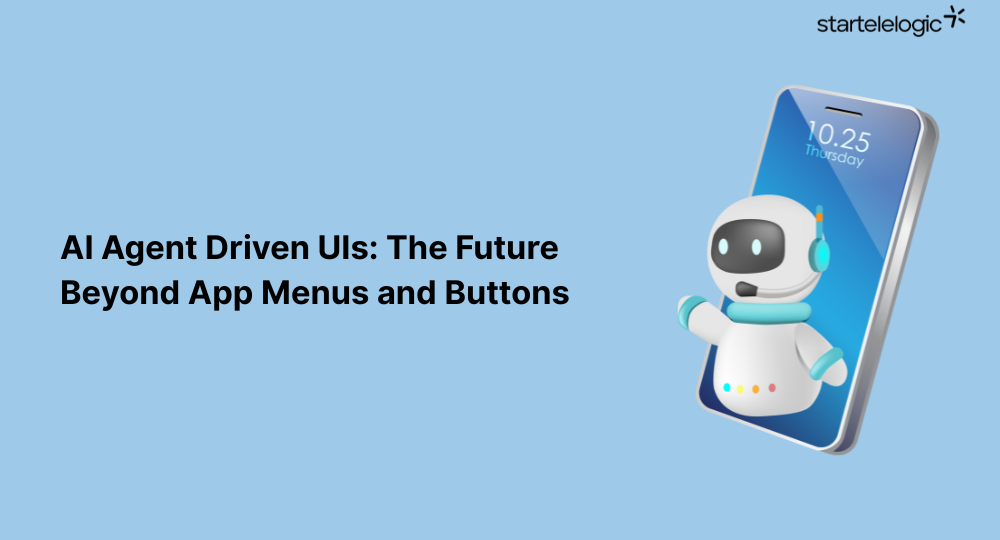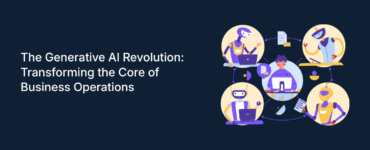In 2025, the global AI software market is projected to surpass $300 billion, with AI integration into consumer applications growing at an annual rate of over 38%. A significant shift within this evolution is happening in user interface (UI) design. Traditional app interfaces—structured around static menus, buttons, and tabs—are being reimagined through AI agent driven UIs, where intelligent, conversational agents replace rigid navigation with adaptive, personalized experiences. Instead of clicking through multiple steps, users simply tell the AI agent what they want, and it executes tasks instantly.
What Are AI Agent Driven UIs?
AI agent driven UIs are interfaces powered by artificial intelligence agents that understand natural language commands, context, and user intent. Instead of relying on drop-down menus or buttons, these agents act as interactive collaborators. For example, instead of opening a food delivery app and navigating through menus, a user could simply say, “Order my usual pizza from Domino’s”, and the AI agent completes the task without requiring multiple clicks.
This transition is not just about convenience—it represents a paradigm shift in human-computer interaction. AI agents blend voice, text, and predictive analytics to create frictionless digital journeys.
Why Replace Menus and Buttons With AI Agents?
Traditional UIs served well in the past, but they have inherent limitations:
- Complex Navigation: The more features an app has, the harder it becomes for users to find what they need.
- Cognitive Load: Buttons and menus demand memorization of paths and actions.
- One-Size-Fits-All Design: Every user interacts the same way, regardless of preferences or habits.
In contrast, AI agent driven UIs provide:
- Context-Aware Experiences – Agents remember past actions, preferences, and behavior.
- Time Efficiency – Users can skip multiple steps and achieve results faster.
- Personalization – The UI evolves based on individual needs.
- Accessibility – Natural language commands lower barriers for non-tech-savvy users.
Real-World Examples of AI Agent Driven UIs
- Google Assistant & Siri – Moving beyond simple Q&A, they now handle multi-step tasks.
- Amazon Alexa for Shopping – Users can reorder items without browsing endless product categories.
- Customer Support Bots – Instead of clicking “Support > FAQs > Chat,” users directly ask agents for help.
- AI in Banking Apps – Instead of navigating through balance, transfer, and payment tabs, an AI agent instantly processes requests like “Send $200 to Sarah.”
The SEO Advantage of AI Agent Driven UIs for Businesses
From a business perspective, embracing AI agent driven UIs is not just a UX upgrade—it’s a strategic growth lever:
- Higher Engagement Rates: Faster, personalized experiences keep users loyal.
- Reduced Drop-Offs: Eliminating complex navigation reduces abandonment.
- Voice Search Optimization: AI agents naturally align with the rising voice search trend, where over 50% of online searches are now voice-based.
- Data Insights: Every interaction with an AI agent creates valuable data for refining products and services.
Challenges in Transitioning to AI Agent Driven UIs
While the future is promising, some hurdles exist:
- Trust & Privacy Concerns – Users may hesitate to share too much personal data with AI agents.
- Accuracy – Misunderstandings in natural language processing can frustrate users.
- Adoption Curve – Some users still prefer traditional buttons for reassurance.
Overcoming these requires robust NLP models, strong data security measures, and hybrid UI designs (mixing agents with minimal buttons for backup).
The Future of Digital Interaction
In the next five years, AI agent driven UIs are expected to dominate app design. Just as touchscreens replaced physical keyboards, conversational agents may soon replace menus and buttons. Imagine banking, healthcare, education, and shopping apps with no navigation bars—only intelligent AI agents anticipating needs and responding in real time.
This isn’t about removing design; it’s about humanizing technology. The future of UIs is not about clicking—but about conversing, requesting, and receiving personalized outcomes instantly.



